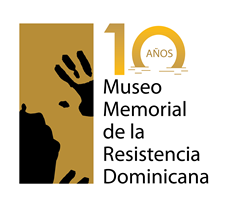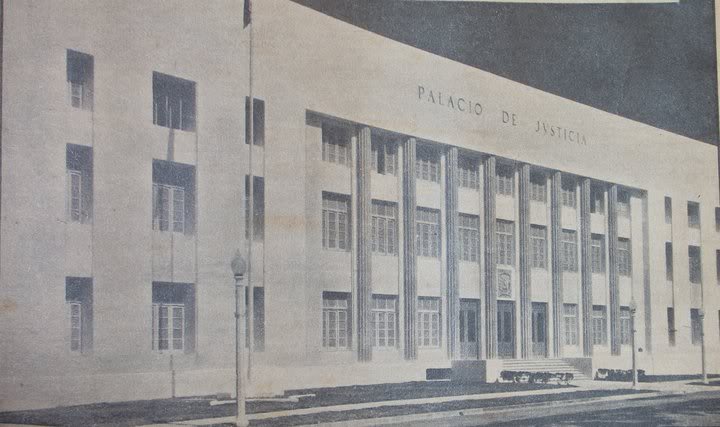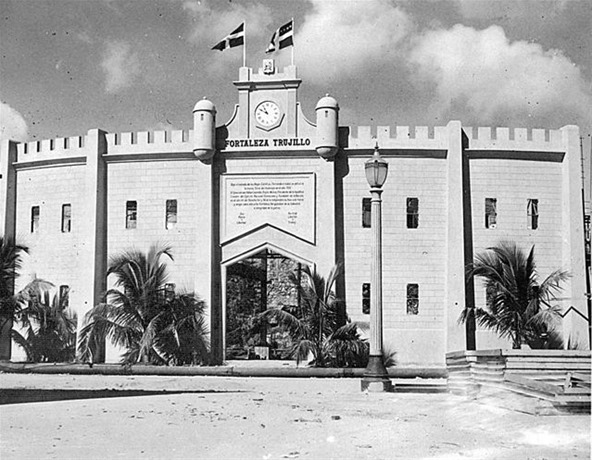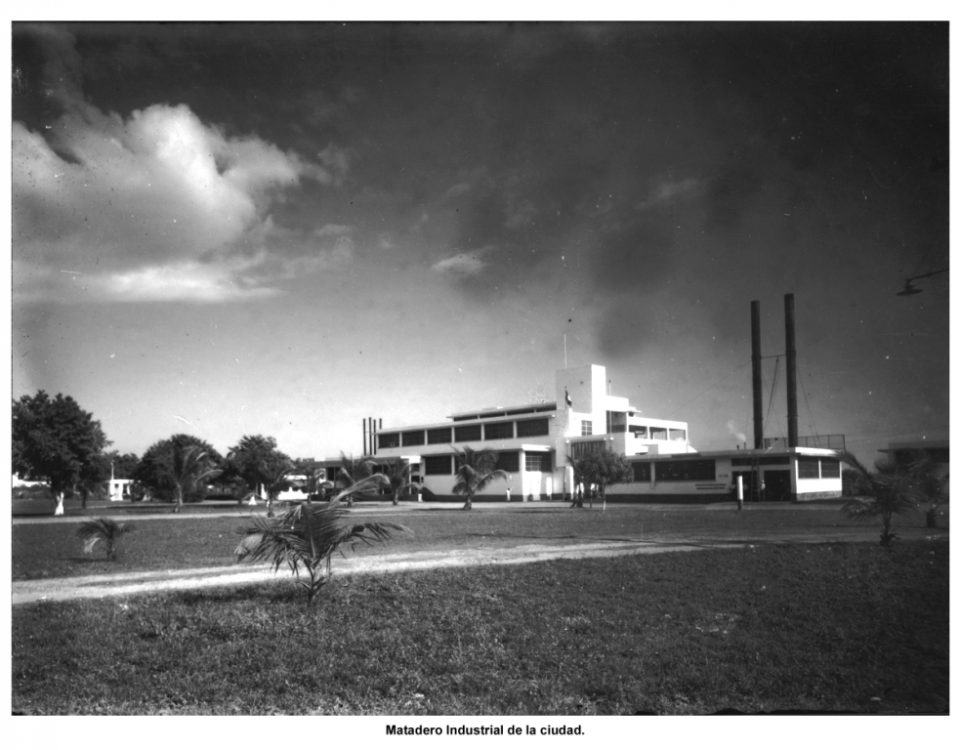The Founding of the June 14th Revolutionary Movement
Religious youth against Trujillo
February 22, 2017
Attempt on Romulo Betancourt, OAS sanctions.
February 22, 2017The popular uprising in Caracas, Venezuela, in January 1958, which overthrew the dictatorship of General Pérez Jiménez, and the subsequent rise to power of Rómulo Betancourt, a declared enemy of Trujillo, and shortly thereafter, the overthrow of the Batista tyranny in Cuba by the 26th of July guerrilla movement of Dr. Fidel Castro Ruz, on January 1, 1959, created an atmosphere of hope and political unrest in the heart of the youth of our country. Pérez Jiménez and Batista, who sought refuge in Santo Domingo, had established a close relationship of mutual aid with Trujillo.
To the above was added the impact produced in the national conscience by the expeditions of June 14 and 19 of that year, the noblest example of patriotic immolation recorded in Dominican history, actions organized against the Trujillo dictatorship by the Dominican exile with the solidarity of the revolutionary government of Cuba, which lent its territory, and that of Venezuela and Costa Rica.
But more tremendous was the feeling of indignation and repudiation that was registered in our society, when the barbaric procedures of torture and extermination to which the young expeditionaries of June who fell prisoners fighting for the freedom of their homeland were subjected began to be known. All the prisoners, after being savagely tortured, were shot by firing squads led by the tyrant's son, Ramfis Trujillo, Chief of Staff of the Air Force, at the San Isidro military base. Aviation officers and young cadets were forced to attend this scene of pain and horror.
At the time of these events, our country was going through a terrible economic crisis as a result of the arbitrary management of public finances and State resources placed at the personal service of the tyrant; it was also suffering from a huge increase in taxes due to excessive government expenditures for the purchase of arms and the expansion of the army, an increase in the rates of public services such as transportation, electricity, water, mail, etc., and a profound inflation that raised the prices of all basic necessities, a situation that affected the middle class and workers in a devastating way, and a deep inflation that raised the prices of all basic necessities, a situation that affected the middle class and the workers in a lacerating way.
In January 1960 In mid 1959, in the context of this climate of anguish and indignation, and the growing misery of the people due to the economic crisis, Dr. Manuel Aurelio Tavárez Justo and his wife Minerva Mirabal, inspired by the example of the heroes and martyrs of June, and his wife Minerva Mirabal, linked since her adolescence with the anti-Trujillo struggle, managed to bring them together and organize them into what was called the Clandestine Movement.
This nascent organization, which began in the home of Guido D'Alexandro (Manolo's nephew) on January 6, 1960, Manolo, Minerva, Leandro and Maria Teresa committed themselves to intensify and formalize the efforts to overthrow Trujillo. Enrique Faxas Canto (Pipe), Luis Gomez Perez, as delegate of the Southern region and Julio Escoto Santana, in the Eastern region, joined the patriotic purpose of initiating the creation of a political organization of resistance to Trujillo's dictatorship.
The constitutive assembly of said organization, which was designated as Movimiento Revolucionario 14 de Junio in homage to the expedition of June 14 and 19, 1959, at the suggestion of Minerva, was held on January 10, 1960, in a farm located in Laguna Salada in the vicinity of the town of Mao (Valverde) owned by Carlos Bogaert Domínguez (Charlie) and in it was elected its Central Committee, headed by Dr. Tavárez Justo, as President, Rafael Faxas Canto, Secretary and Eng. Tavárez Justo, as President, Rafael Faxas Canto, Secretary and Eng. Leandro Guzmán, as Treasurer. The new organization assumed as its own the government program of the June 14 expeditionaries drafted by the Dominican Liberation Movement in Cuba.
The following were elected members: Julio Escoto Santana, delegate of the East; Luis Gómez Pérez, delegate of the South; Carlos Crisanty García, delegate of Santiago; Luis Antonio Álvarez, delegate of San Francisco de Macorís; Efraín Dotel Recio, delegate of Barahona; Germán Antonio Rodríguez, alias Rodrigote, delegate of La Vega. Days before this assembly, young Jorge Lama Mitre, a native of Santiago, was sent to New York to establish contacts with the exiled leaders of the Dominican Liberation Movement.
The June 14th Revolutionary Movement was able to bring together hundreds of young students, dozens of professionals, rural producers, owners of medium-sized farms, commercial workers, and even several children of prominent members of the dictatorship's bureaucratic apparatus and, to a lesser extent, workers and peasants, all determined to put an end to that despotic and opprobrious regime throughout the length and breadth of the country.
From the beginning of the movement, Dominican women were present: Patria, Minerva and María Teresa Mirabal, engineers Tomasina Cabral, Dulce Tejeda, Violeta Ortega, Dr. Asela Morel, Miriam Morales de Valles. They were active members of the organization, Minerva as a leader, although she was not part of the board of directors because in those times the role of women was always relegated and Tomasina Cabral (Sina), was even tortured in the prison of the 40th, as were many of the men.
A group of seminarians (Luis Ramón González, Papilín Peña, Antonio Lockward, Rene Parra and Rafael Lefeore, Cubans, Hipólito Medina, William Lantigua, Mario Rafael García Cepeda) and some priests, such as Vinicio Disla, Daniel Vinicio Cepeda, Daniel Inoa and Father Febre de la Guardia, Cubans, also joined June 14.
Shortly after Mao's meeting, however, the project of the castorcistas fell victim to the denunciation of an infiltrator, initiating in early January 1960, a huge raid that covered the main towns of the country in addition to the capital, in which hundreds of patriots from all social sectors, who had committed themselves to the libertarian purposes of Manolo Tavárez and Minerva Mirabal, were arrested.
All the detainees, including those from the interior, were taken to Trujillo's clandestine torture and extermination center known as "La Cuarenta", located in the upper part of the capital city.
Among the first to be arrested were the main organizers of the Agrupación 14 de Junio, Dr. Manuel Tavárez Justo, his wife Minerva Mirabal, Eng. Leandro Guzmán and his wife María Teresa Mirabal, Pedro González, Rafael Faxas Canto, alias Pipe, who, like the others, were subjected to the most vile and barbaric torture procedures, including the electric chair, a diabolical device devised by the satanic chief of the intelligence services, Colonel Johnny Abbes García, where the interrogations of those committed to the anti-Trujillo resistance were carried out.Resisting with heroism all kinds of tortures, humiliations and humiliations, many patriots died, such as Dr. Tejada Florentino, Eugenio Perdomo, the worker Odalis Cepeda, Manuel Gonzalez Franco, veteran anti-Trujillo member of the Democratic Youth in 1946 and others.
In addition to Manolo Tavárez, Leandro Guzmán and Pedro González, the following anti-Trujillistas underwent the terrible experience of suffering the horrible and different forms of torture applied in the prison of "La Cuarenta":
Luis Gómez, doctor Rafael Eduardo Valera Benítez (a) Fefé, Lisandro Macarrulla, José Israel Cuello, Adolfo Franco Brito, Hugo Quezada, José Frank Tapia Cunillera, José Fernández Caminero, Miguel Lama, Fernando José Francisco Fernández Simó (a) Abelito, Carlos Conrado Bogaert Domínguez (a) Charles, José Roberto Danilo Cruz Segura, Dr. José Tallaj Abi-Saab, Marcelo Felipe Bermúdez Estrella, Pedro Gregorio Espinal Pérez, Jaime Durán Hernando (a) Jimmy, Germán Antonio Silverio Mesón (a) El Guardia, José Ramón Ureña Quiroz, engineer José Ramón Manuel Baquero Ricart (a) Manolito, Angel Salvador García Alecont (a) Cucho, Rafael Eduardo Tavárez Liz (a) Yayo, Marcos Dionisio Troncoso Troncoso López Penha, Alfredo Vásquez Calderón (a) Gallego, doctor Wenceslao Nicolás Vega Boyre, Agliberto Meléndez Jiménez, Mario Alfredo Mathis Ricart, Alfredo Alba Sánchez and Alfredo Oscar Bergés Febles.
Engineer Félix María Germán Olivier, Rafael Armando Rodríguez Méndez (a) Rafelito, Ivan Antonio Álvarez Rodríguez, Luis José Germán Olivier, doctor Federico Carlos Leonardo Bonelly Valverde (a) Freddy, doctor Alejandro Zapata Vásquez, Ramón Andrés Blanco Fernández, Ascanio Andrés Santoni Calzado, Oscar Gilberto Santoni Calzado, doctor Oscar Llebert Nicolás Hazim Subero, doctor Radhames Alcides Rodríguez Gómez, Manuel Angel Asencio Irrizarri, Miguel Salado Frías (a) Morongo, Nicolás Garrido Cestero (a) Pilar, Sergio Federico Germán Medrano, Federico Enrique Michel Carrasco, Rafael Miguel Enrique and Antonio Faxas Canto (a) Pipe.
Roberto Antonio Arzeno Rodríguez, Rafael Antonio Báez Pérez (a) Cocuyo, José Antonio Hurtado, César Leopoldo de los Santos Almonte, Rafael Octavio Silverio Mesón (a) Fellito, Germán Ricardo Ares Hevia (a) Flaco, Rolando A. Álvarez Abreu (a) el Hurón, Vinicio Rafael Grisanty Isidro, Julián Grisanty Missick, Rafael Darío Vidal Rodríguez, doctor Alfredo Parra Beato, Ramón Gilberto Sánchez Fuster, Nicolás Pérez y Pérez, Oscar Arístides Juliao González (a) Fello, Luis Lora Otaño, Pindaro Pedro Bobea Prandy, René Federico del Risco Bermúdez (a) Chichí, Danilo Aguilo Hidalgo, Diego Casasnova Garrido, José Cadet Mena, Noel Giraldo Medina, Juan Luis Mejía Aguasvivas, Arcadio Encarnación Palmer, Francisco Saldaña Medrano (a) Toño, Carlos Sully Bonelly Valverde, Ramón Cáceres Troncoso, Otilio Antonio Portorreal González (a) Tilito, engineer Carlos Sully Martínez Bonelly, Fausto Rodríguez Mesa, Bienvenido Ramón Tejada Rodríguez, Luis Beltrán Pérez Espinosa and hundreds more.
The imprisonment of all these Dominicans from all social sectors and not a few members of wealthy families, including some children of officials of the bureaucratic apparatus of the tyranny caused a commotion throughout the nation and had international repercussions.
That was the moment chosen by the Catholic Church to break with the dictatorship. The first sign of this break, which deeply affected the tyrant, was the publication of a pastoral letter signed by all the bishops, read in all the churches of the country on January 21, 1961, demanding respect for human rights and calling for the cessation of persecutions and outrages against the youth of June 14.
This distancing of the Church from the dictatorship coincided with the withdrawal of support from the United States, situations that Trujillo confronted with arrogance in both cases. With the former trying to force the Church, through Balaguer's initiative and request, to recognize the tyrant as "Benefactor of the Church", ordering the repression of bishops and priests suspected of conspiracy, and with Washington, using as blackmail an alleged rapprochement of the tyranny's government with the Soviet Union and the Cuban revolution.
Such a turn of events showed that the dictator was marching towards his decline. But what made it clear that the dictator had lost all sense of political reality and was acting absolutely deranged was the order given to assassinate the three Mirabal sisters on November 25, 1960, a horrendous crime that shook the conscience of the nation and even outraged many of his close collaborators. As is well known, this tragic event originated the intertwining of the wills of the brave people who participated in the action that put an end to the dictatorship on May 30, 1961.




